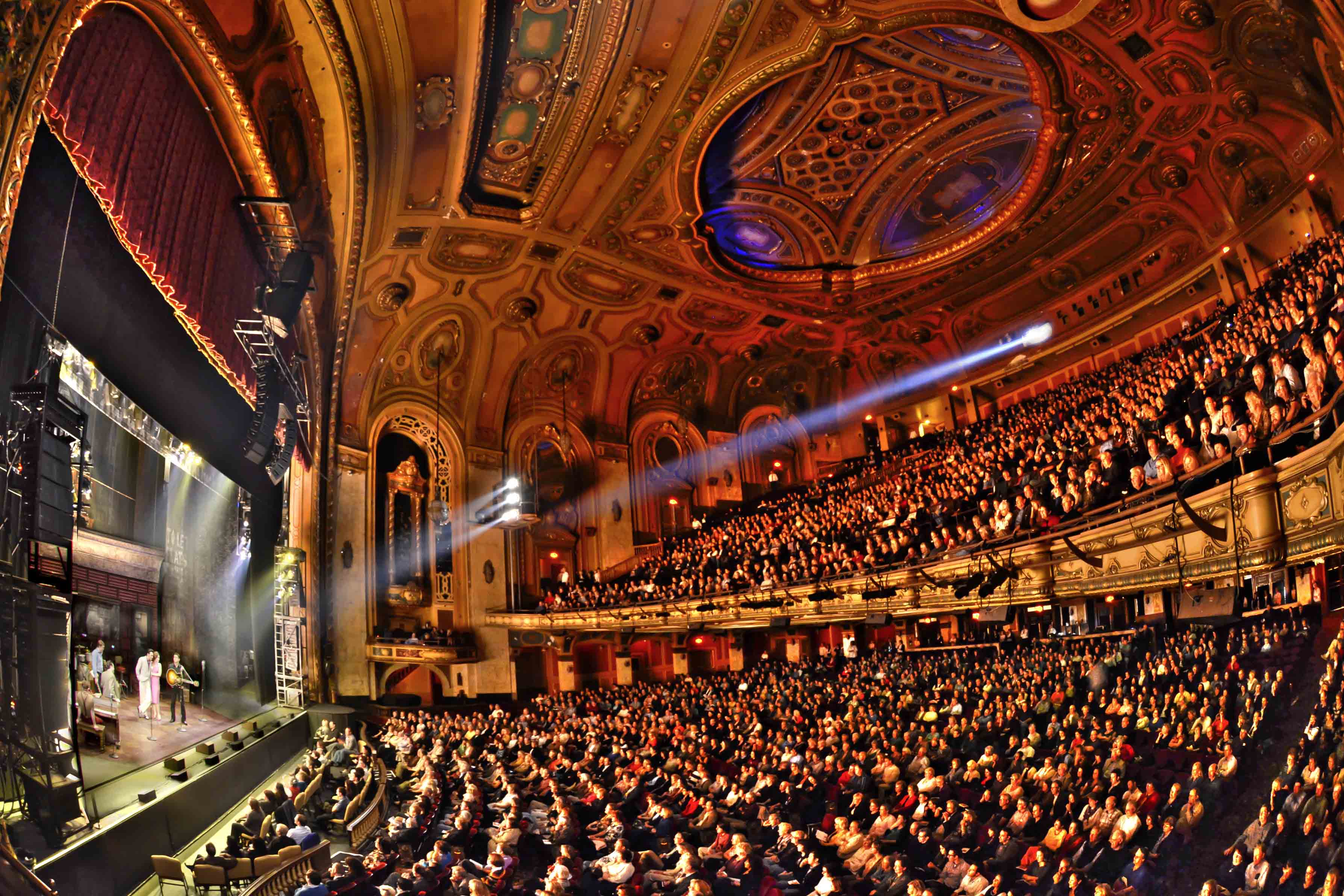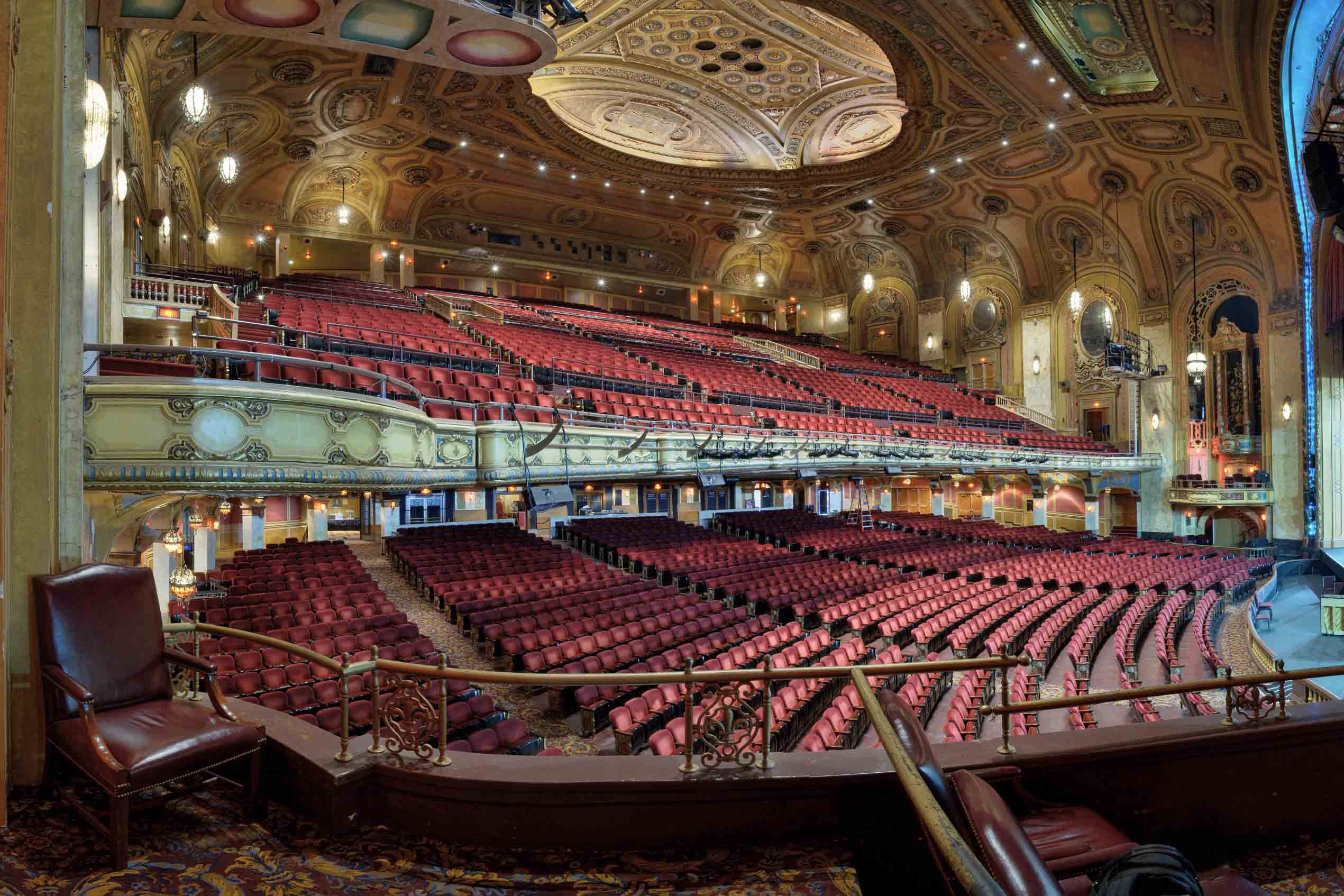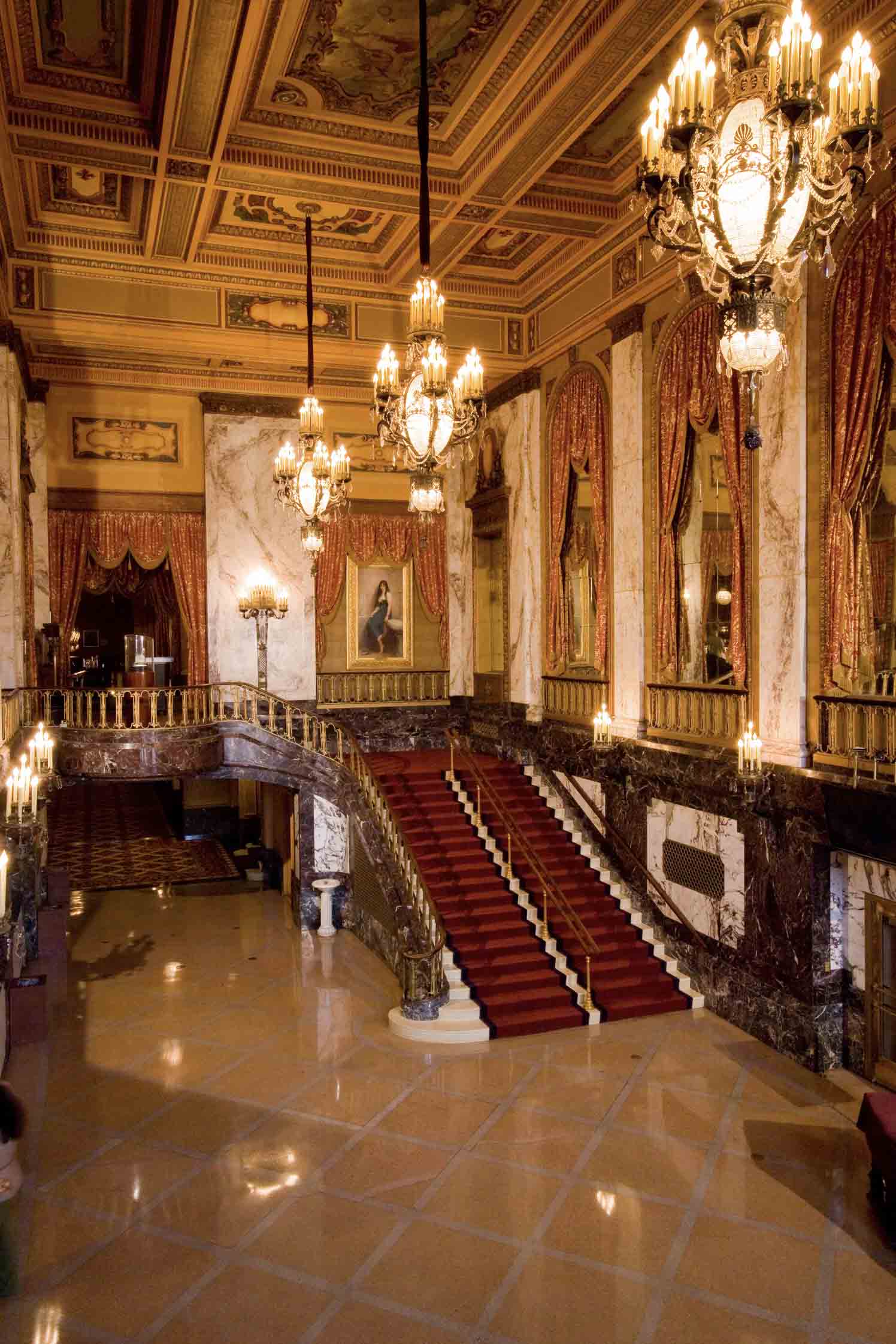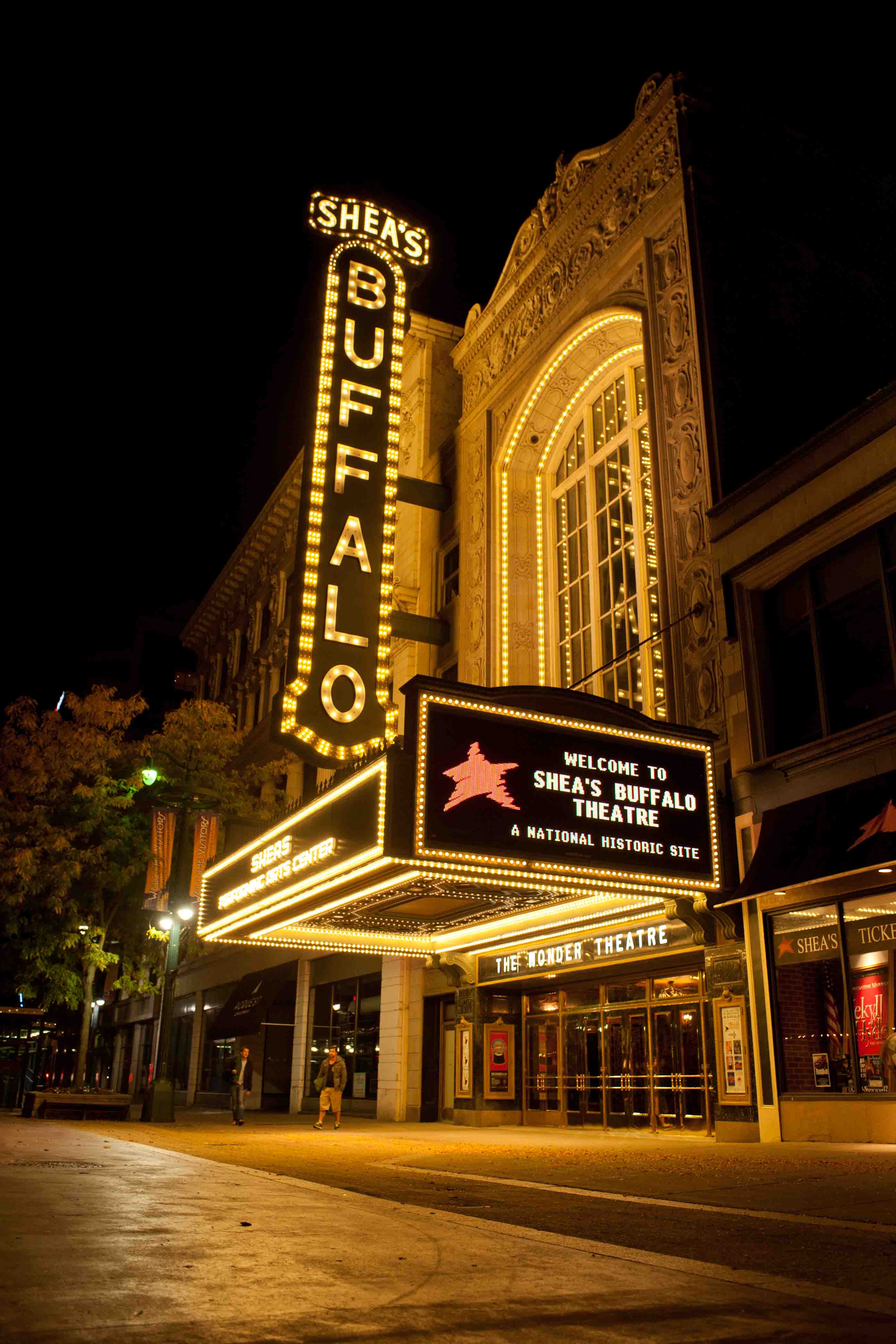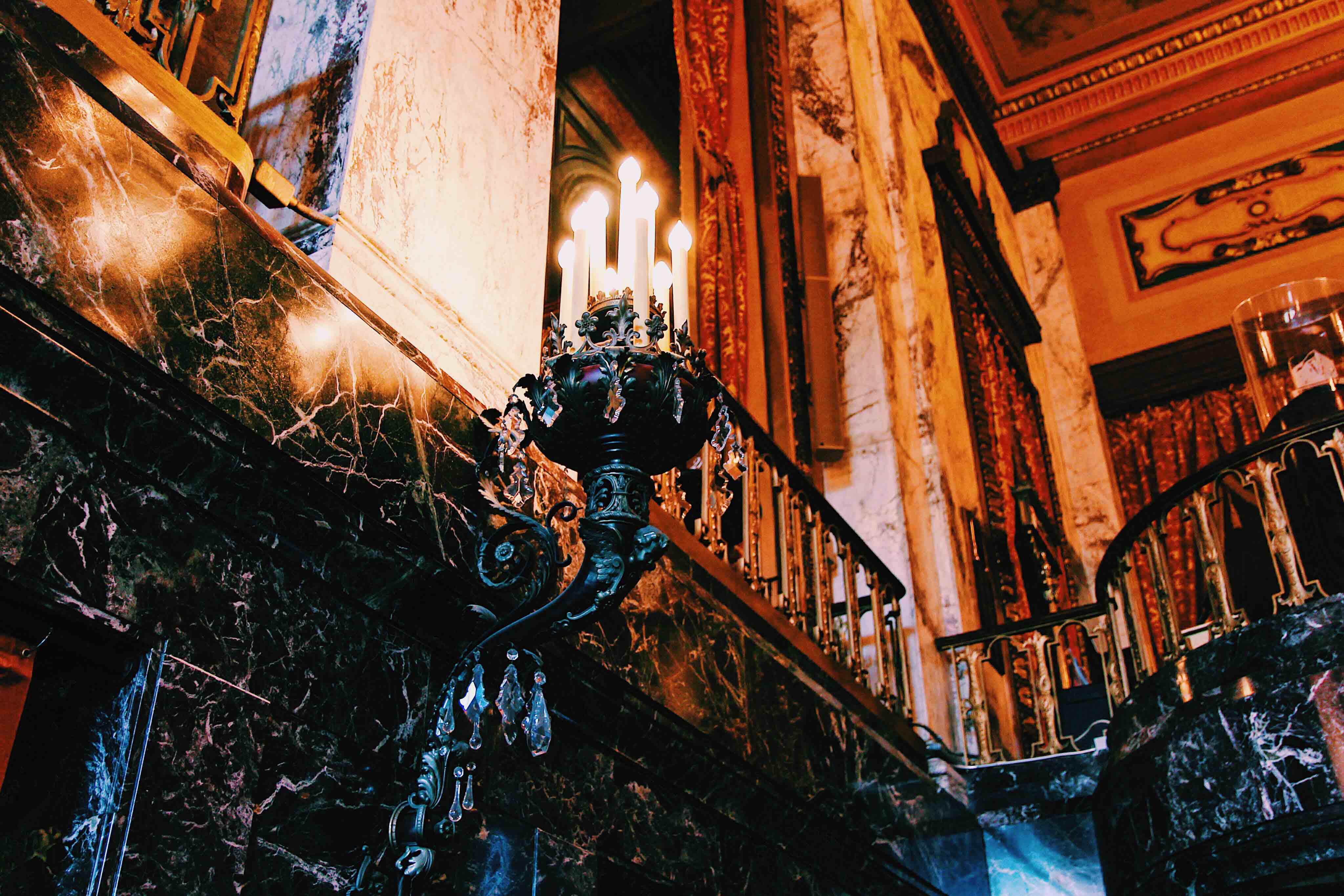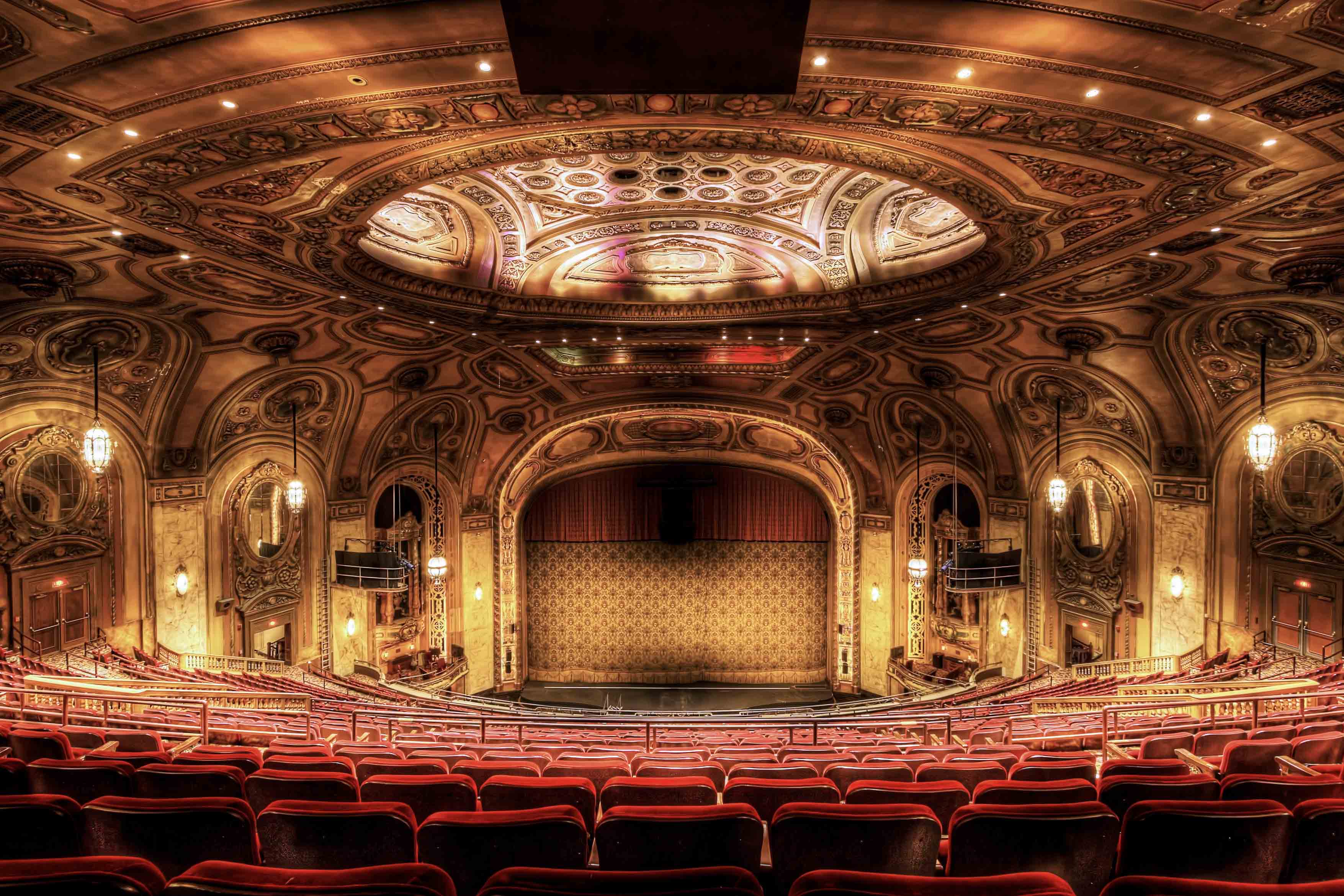Buffalo Architectural Spotlight: Shea’s Performing Arts Center
The magnificent structure that is Shea’s Performing Arts Center (originally called Shea’s Buffalo) opened in 1926 on Buffalo’s bustling Main Street. It’s had its ups and downs, but now with loving dedication, the theater and event space has been restored as closely as possible to its original glory, and serves as a touchstone for downtown’s exciting revitalization.
The building was commissioned by impresario Michael Shea and designed by the Rapp brothers from Chicago, who specialized in grand movie houses of the day, with interiors by the renowned Art Nouveau designer and artist Louis Comfort Tiffany. Lush European baroque style décor and architectural elements include domed ceilings, intricate chandeliers and wall sconces, and fantastical hand-painted, carved and molded proscenium and elements throughout the huge theater.
After a few decades, it fell into disrepair and economic woes. To ensure that it could not be demolished, a non-profit group, Friends of Shea’s, rallied to get the building listed on the National Register of Historic Places. Such listings require that any work done must be in keeping with its original design standards, if not directly replicating them. By the mid-1990s, serious efforts were underway to restore its grandeur.
“Restore” is the operative word; the theatre, which is a favorite stop for touring Broadway shows and is an elegant setting for events and concerts, has neither been renovated nor remodeled. The goal is to restore the things that needed it (most everything) while updating only the things required for functionality, safety or to accommodate the change in usage from a movie house to a large-scale performance theater.
Much of the work—except for where prohibited by insurance or necessitating a professional—has been done by volunteers. Shea’s meticulously recreated and reinstalled the grand drape; hand-brushed every inch of the thousands of square feet of intricate decorative painting; updated the electrical system and wiring; refinished, repainted and recovered original furniture and scoured the earth for just the right (woven not tufted) carpets to complement those luscious red walls.
Historian/historic art expert Doris Collins has overseen the project; she’s been consulting with Shea’s for over 20 years, and has attended to every detail with meticulous attention. (She personally carried a piece of fabric to her native Austria to source a vendor to replicate it.)
Another huge element of the original theater is its organ—the largest Wurlitzer theater organ “still in its original home,” said Collins. The organ restoration required a pro, and cost around $400,000.
One of the faux marble techniques that Collins points out inside Shea’s is the ancient art of scagliola, which uses plaster and dyes to mimic marble—while there is plenty of actual marble, scagliola walls are visible in the lobby and staircases in the building.
Collins adds that without the discovery of replicas of some of Tiffany’s original drawings and watercolors to reference in the restoration, they wouldn’t have been able to be as faithful. “We would have had no idea what the grand drape border looked like,” she added. “But going strictly from the Tiffany rendering, we had it woven and sewn.”
With the Shea’s theatre season in full swing, it’s time to catch a show and see the interior of this magnificent theatre once again. If you’d like to see upcoming online events or donate to the theatre visit sheas.org.
Check out more of the beautiful details of Shea’s in the photos below (click to enlarge):
